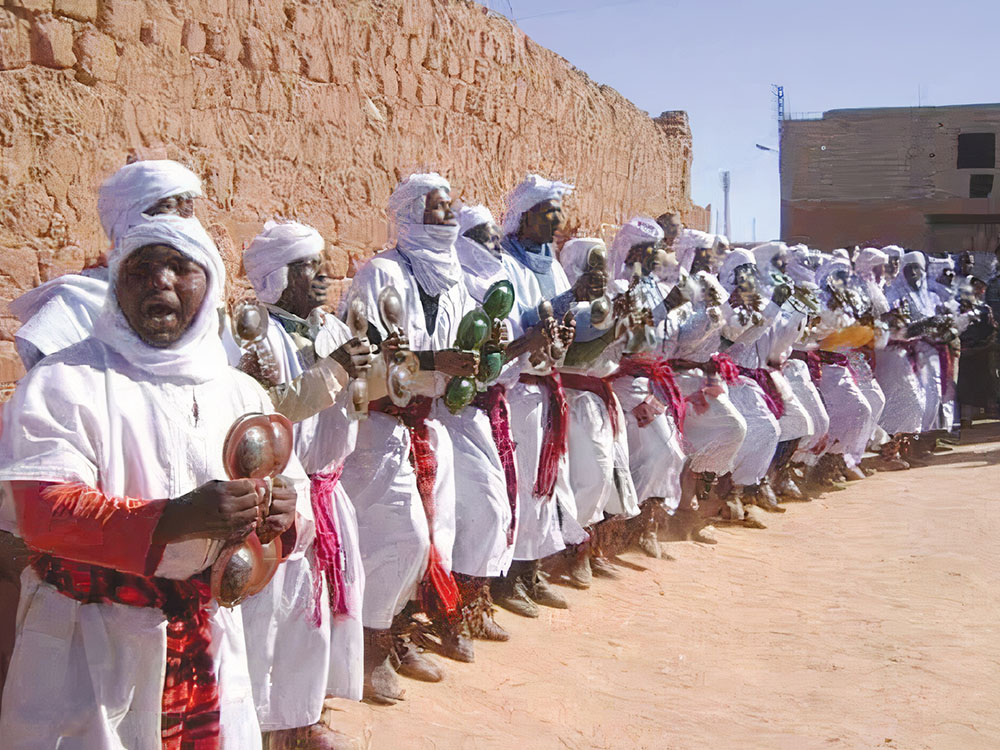Folklore dance in Adrar (Tuat): The example of Qarqabu dance
Issue 55

Naima bin Sharif
Mouloud Mammeri University of Tizi Ouzou, Algeria
Since ancient times, folk dance has been a way for the members of a society to express their desire to be free of life's worries, to vent their repressions and heal diseases, and to experience pride and joy. Folk dance, a popular activity and practice at celebrations, feasts and occasions, is preserved by teaching.
One of the most innovative art forms, dance is a natural ability that separates humans from other living creatures. All feelings are expressed through the body’s motions and movements. Folk dances rely on simple hand tools that have been preserved because they represent an ancient heritage with expressive artistic value.
The study of folk dance takes us back to the distant past where we find that the oldest folk dances were associated with work or they reflected a person’s perceptions or concepts about the world. In general, the movements reflected those used when hunting animals, ploughing the soil or rocking a child to sleep and, because of their spontaneity, they were able to fully express things that the members of the society did.
Folk dance is a result of people's creativity and daily lives. It reflects their actions, feasts, celebrations, rituals, their history, the natural environment in which they live, and their private and social habits. We can trace the history of dance back to primitive times, which indicates that dance brought joy to people's souls or that the crops grew well when people danced. The failure to dance led to poor harvests and hunting; in short, it led to starvation and misery.
Dance was an important part of the ancient Egyptians' celebrations because they saw it as a natural expression of joy. The peasants would dance when presenting the first of their crops to Min, the god of the city of Qeft. Dance was the most important performance on feast days and at events related to the two great gods of that time, Hathor and Bastet. Some Indian tribes danced to encourage rains in the early spring. There were war and hunting dances with magical meanings.
Folk dance expresses a people’s perceptions and beliefs. It is a forum for social interaction and for overcoming boredom and worries, and it allows people to communicate with their ancestors' heritage and preserve customs and traditions related to the collective memory.







































































